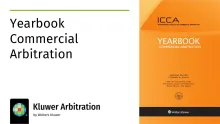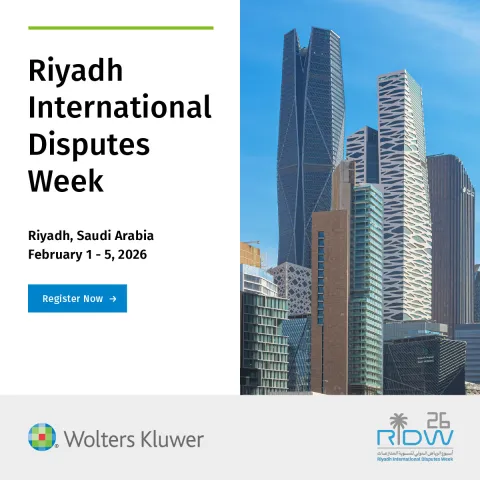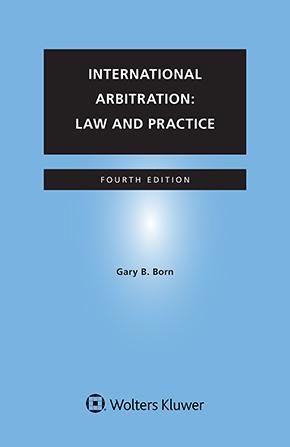Delineating the Scope of Arbitral Awards under Singapore's International Arbitration Act
November 6, 2025
Defining the parameters of what constitutes an arbitral award is an important exercise towards strengthening the integrity of the international arbitration system. As Gary Born explains in International Commercial Arbitration (Kluwer Law International 2021, 3rd Ed, updated December 2023) (“Born”) at p 4978, a decision that is characterised as an award is “subject to annulment, recognition and enforcement … [while non-awards] should be subject to neither annulment nor recognition and enforcement.”
In DLS v DLT and another matter [2025] SGHC 61 (“DLS”), the General Division of the Singapore High Court (the “Court”) provided instructive guidance on the distinction between an “award” and an “order or direction”, for the purposes of setting aside under the International Arbitration Act 1994 (the “IAA”).
This article will explore: (i) whether the decision in DLS aligns with international consensus on this issue; (ii) how the IAA defines Singapore-seated and foreign-seated awards; and (iii) the importance of the definition in the context of enforcement.
DLS: Background
DLS arose out of an arbitration which was governed by the International Chamber of Commerce (“ICC”) Rules of Arbitration and seated in Singapore, between a main contractor (the “Contractor”) and a sub-contractor (the “Sub-Contractor”) relating to a construction project. In its “First Partial Award”, the arbitral tribunal ordered:
the Contractor to make monthly payments to the Sub-Contractor to cover operational costs until the final completion of the project (the “Monthly Payment Decision”); and
the Contractor to make a lump sum payment to the Sub-Contractor as compensation for VAT refunds that were ultimately unpaid (the “Lump Sum Payment Decision”).
The Contractor sought to set aside both decisions. It argued that the tribunal had exceeded its jurisdiction and breached natural justice. It also sought to rely on the apparent bias of an arbitrator as an additional ground to set aside both decisions.
The Ruling in DLS
In DLS, the Court considered the ambit of sections 2, 12, and 24 of the IAA, and how these provisions determined whether the two decisions of the tribunal were susceptible to being set aside.
Applying the decision of the Singapore Court of Appeal in PT Perusahaan Gas Negara (Persero) TBK v CRW Joint Operation [2015] 4 SLR 364 at [50], the Court held that section 12 of the IAA expressly deals with a tribunal’s power to make orders and give directions which are provisional in nature — i.e., they do not definitively or finally dispose of either a preliminary issue or a claim in an arbitration. These include, among others, orders for security for costs, discovery of documents and interim measures to preserve assets or evidence.
By contrast, section 2 of the IAA defines an award as:
“a decision of the arbitral tribunal on the substance of the disputeand includes any interim, interlocutory or partial award but excludes any order or direction made under section 12.”
Accordingly, a decision qualifies as an award under the IAA only if it finally disposes of an issue in a dispute, including a preliminary issue.
The Court further stated that section 24 of the IAA and Article 34(2) of the UNCITRAL Model Law on International Commercial Arbitration (“Model Law”, which forms part of Singapore law by virtue of section 3 of the IAA) — both of which govern the setting aside of awards — have no application where the decision in question is not an award (i.e., where it is an order or direction under section 12 of the IAA).
The Court emphasised that whether a decision is an award or an order or direction is a question of substance, not form. Labels like “award” are neither indicative nor dispositive. Rather, what matters is a decision’s finality.
Applying the above principles, the Court in DLS held that the Monthly Payment Decision was not an award for the purposes of section 2 of the IAA, although the decision was embodied within a document titled “First Partial Award”.
Rather, it was an interim measure under section 12 of the IAA because, among others:
It did not definitively or finally determine the Sub-Contractor’s entitlement;
It was expressly made conditional upon the provision of security; and
The tribunal stated that the decision was “subject to review” in the final award.
In contrast, the Lump Sum Payment Decision was a final determination because there were no provisional features or references to future revision. Hence, it constituted an award susceptible of being set aside under the IAA.
The Decision in DLS Is Consistent With International Jurisprudence
The Singapore position on this distinction is aligned with most international jurisprudence. According to Born (at p 4829), “only the final and binding disposition of an issue qualifies as an award”.
Similarly, and as discussed in this blog post, the Supreme Court of Victoria in Blanalko Pty v Ltd v Lysaght Building Solutions Pty Ltd [2017] VSC 97 held at [66] that:
“ … the Award … in spite of its labelling, … was clearly not a final award. The Award did not decide all issues put to the arbitrator within the arbitrator’s mandate and did not involve an order or direction that might be characterised as an invalid delegation of power to a third party. At common law[,] the Award is not final …”.
In contrast, under English law, regard is also had to how a reasonable recipient, “with all the information that would have been available to the parties and to the tribunal when the decision was made”, would have viewed the decision (ZCCM Investments Holdings Plc v Kansanshi Holdings Plc and Another [2019] EWHC 1285 (Comm) at [40]).
Is There a Different Test for Determining Foreign “awards” Under the IAA?
While the decision in DLS was concerned with an award issued in a Singapore-seated arbitration, the IAA applies a different test when determining whether a decision rendered by an arbitral tribunal in a foreign-seated arbitration amounts to an “award” which may be enforced in Singapore.
The clearest example of this can be found in section 27(1) of the IAA, which defines a foreign arbitral award to include “an order or a direction made or given by an arbitral tribunal in the course of an arbitration in respect of any of the matters set out in section 12(1)(c) to (j)".
Further, under section 29(2), a foreign arbitral award which is enforceable in Singapore must be recognised as binding on the parties.
This position was confirmed by the Court in CVG v CVH [2022] SGHC 249 (“CVG”). That case concerned the enforcement of an emergency foreign award in Singapore. The award was issued in an arbitration governed by the International Centre for Dispute Resolution International Arbitration Rules and seated in Pennsylvania.
The emergency award restored the status quo of the parties before the defendant had terminated the underlying franchise agreement. In other words, the emergency award was, in substance, an interim measure pending final determination of the issues in that arbitration.
Despite the provisional nature of the emergency award, the Court in CVG held that the emergency award was capable of being enforced as a foreign award. The Court found that, on a purposive interpretation, the term “arbitral award” in section 27(1) of the IAA includes awards by emergency arbitrators (at [28]–[35]). This is the case even though the definition of “arbitral award” in section 27(1) does not expressly refer to awards by emergency arbitrators, while the definition of “arbitral tribunal” in section 2(1), which does not apply to foreign awards, expressly includes a reference to “an emergency arbitrator”. The Court further found that the emergency award was a binding award within the meaning of section 29(2) of the IAA (at [37]).
Key Takeaways
The upshot of these decisions is that an arbitral award made in Singapore is characterised very differently from a foreign award. A decision of a tribunal in a foreign-seated arbitration that does not finally resolve a substantive issue may still be enforced in Singapore, whereas the same decision made by a tribunal, including an emergency arbitrator, in a Singapore-seated arbitration would not be subject to setting aside under section 24 of the IAA and Article 34 of the Model Law, or enforcement under section 19 of the IAA and Article 35 of the Model Law.
However, that is not to say that the same decision by the tribunal in a Singapore-seated arbitration will not be enforceable at all. Section 12(6) of the IAA expressly provides that all orders and directions given by an arbitral tribunal will be enforceable in the same manner as if they were orders made by a court. Enforcement of such decisions thus may not be refused pursuant to Article 36 of the Model Law.
On the other hand, decisions of a tribunal in a foreign-seated arbitration which are not final can be enforced under section 29 of the IAA, such that enforcement may be refused pursuant to section 31 of the IAA.
It is important for parties and practitioners to bear in mind the distinctions that have been drawn in Singapore arbitration jurisprudence when determining avenues for enforcement in Singapore.
You may also like










